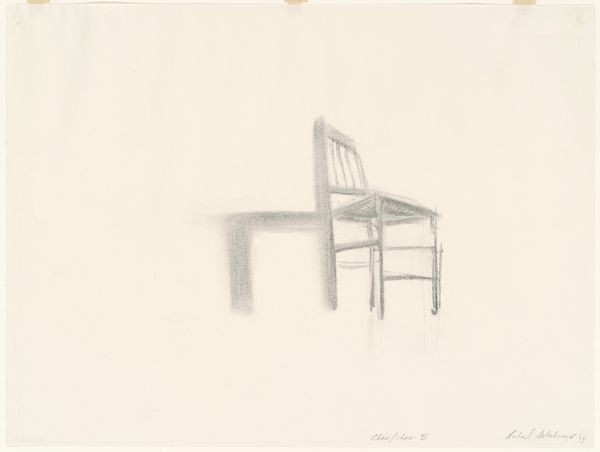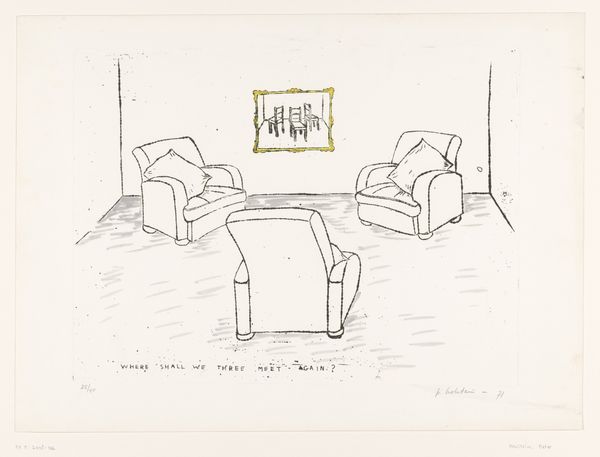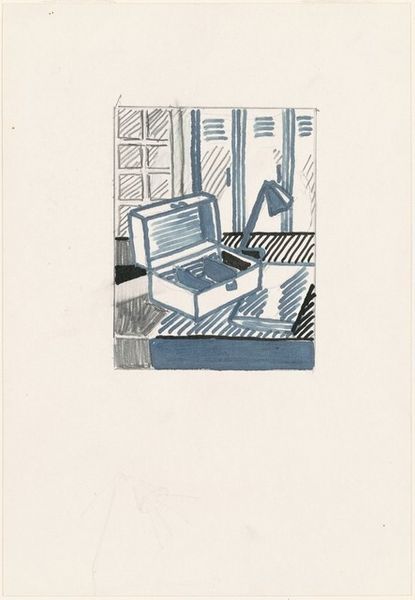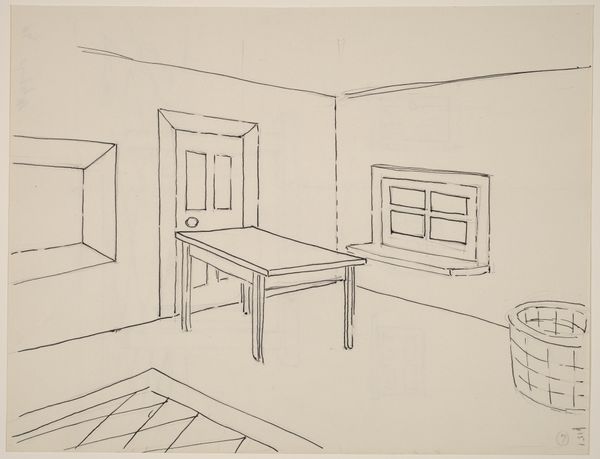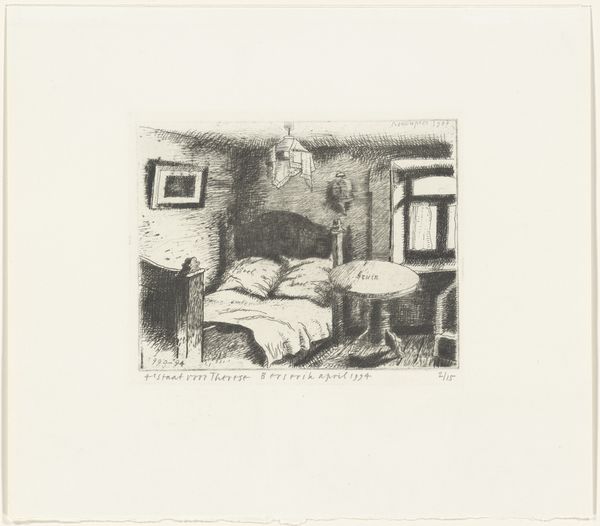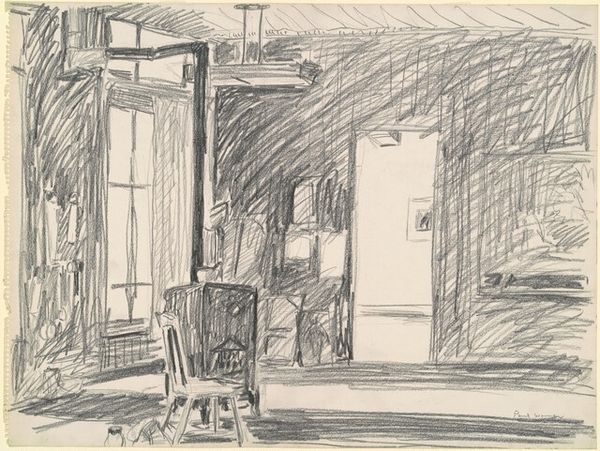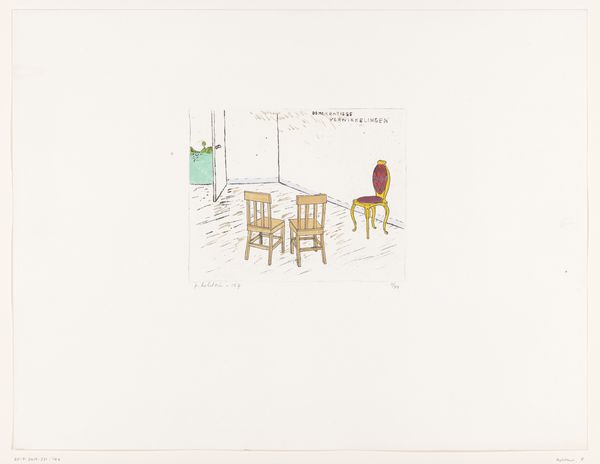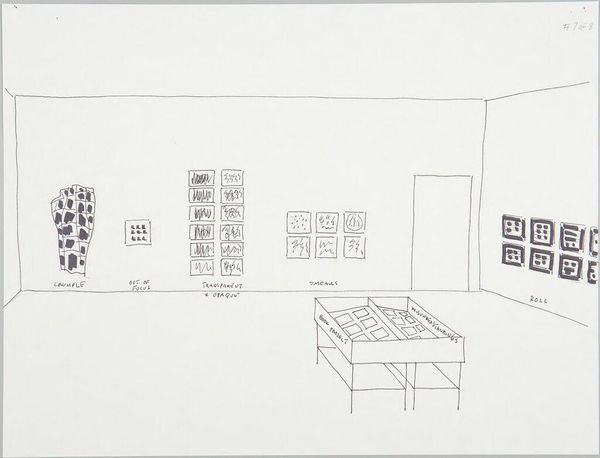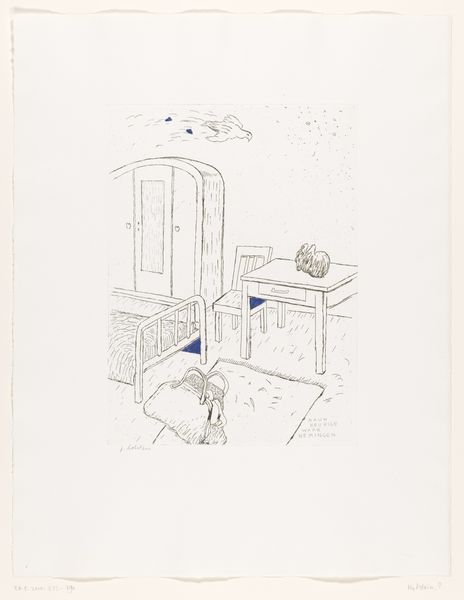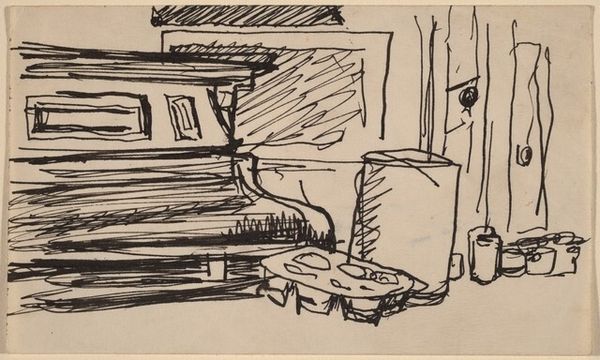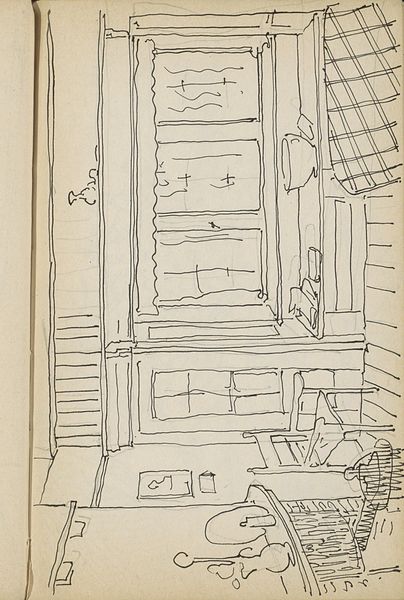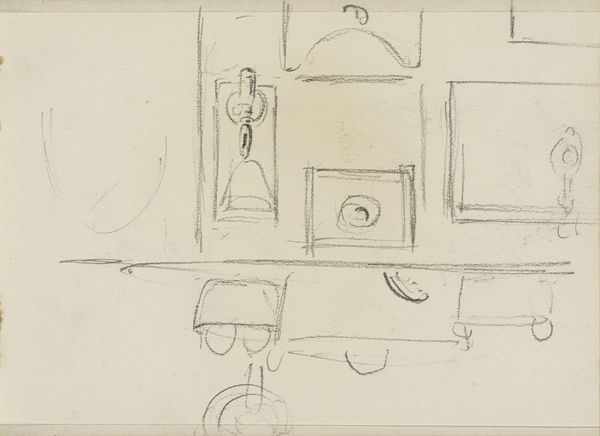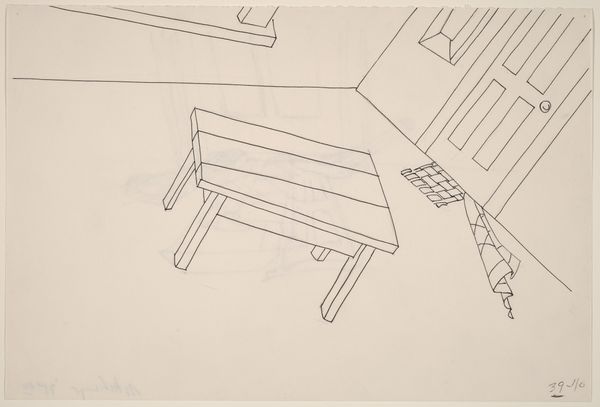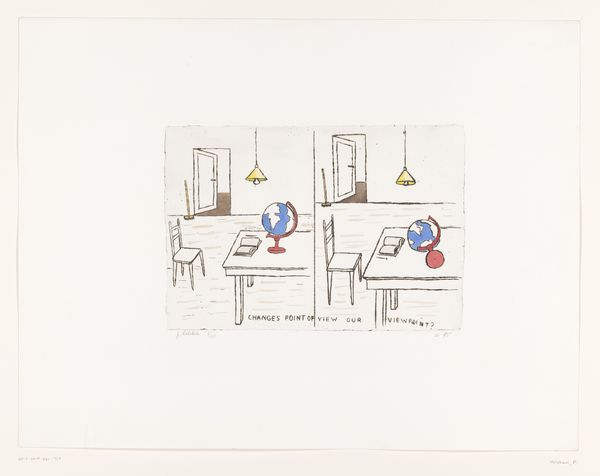
drawing, paper, pencil
#
drawing
#
landscape
#
figuration
#
paper
#
pencil
#
realism
Dimensions: overall (irregular): 101.9 x 124.5 cm (40 1/8 x 49 in.)
Copyright: National Gallery of Art: CC0 1.0
Curator: This drawing from 1992, a "Study for 'Bedroom at Arles'" is by Roy Lichtenstein, crafted with pencil on paper. What strikes you first about it? Editor: It's remarkably sparse, almost skeletal, wouldn't you say? All clean lines and fundamental forms. Very unlike what one might expect of a "bedroom," especially compared to, say, Van Gogh. Curator: Exactly. And the relationship with Van Gogh is the critical element here. This is, of course, a deliberate appropriation, a re-staging of Van Gogh’s iconic bedroom in Arles, but viewed through the lens of Pop Art and, I would add, a flattened perspective echoing commercial illustration. The context is key; it raises fascinating questions about authenticity, reproduction, and the nature of artistic influence. Editor: I see that, and I’m pondering the emptiness, even the loneliness that emanates. What are we to read from the extraction of Van Gogh's energetic brushstrokes, all his colour, and his almost manic commitment? I read into it themes of the artist grappling with legacies of modernism and a sense of contemporary alienation. Curator: Interesting point, alienation. It highlights the way Lichtenstein critically engages with the artistic canon. His mechanical reproduction strips away much of the emotional content associated with the original while also questioning the commodity status of art itself. The starkness emphasizes a deliberate commentary. Editor: What's the role of figuration here? Everything depicted has purpose, nothing is incidental. This challenges our view that an artist simply "fills" a composition, Lichtenstein asks us to consider what images are valued as intrinsically essential? What makes a picture worthy? Curator: That resonates profoundly. We must remember how institutional critique became deeply ingrained in art during Lichtenstein's period. Museums and galleries played a vital role, showcasing art within specific historical and social frameworks, contributing to the overall perception and understanding of art as political. Editor: So, looking at it, I leave with this heightened awareness around artistic dialogue and legacy—a sense that artworks exist not in isolation but within a rich history of appropriation and critique. Curator: And for me, the drawing invites reflection on art's transformative power; it demonstrates how artists can revisit and reinterpret historical works through contemporary lenses, initiating new narratives about culture, identity, and artistic value.
Comments
No comments
Be the first to comment and join the conversation on the ultimate creative platform.
